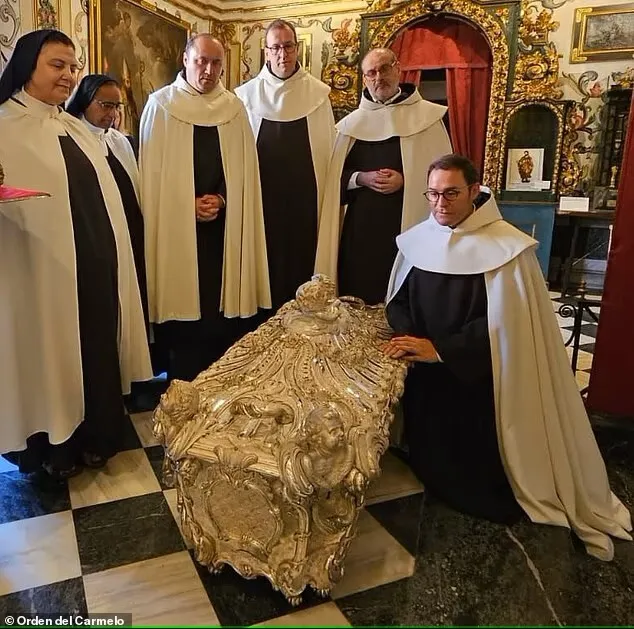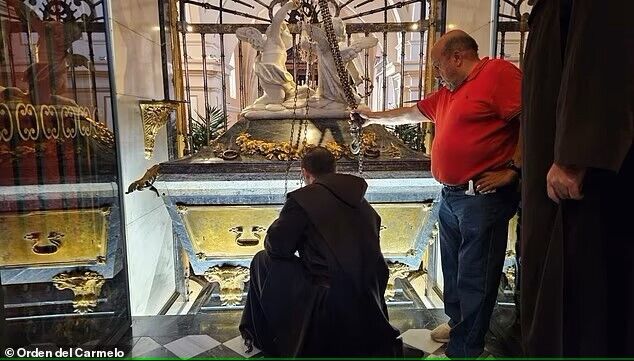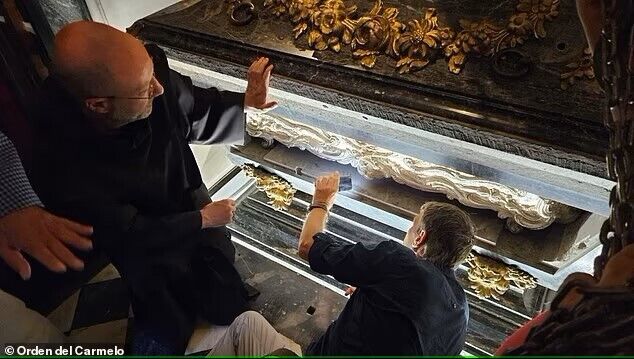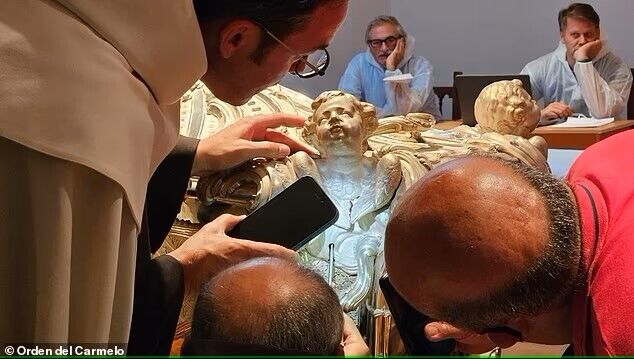News
A miracle of God! The body of St. Teresa, who died almost 450 years ago, was found incorrupt in Spain. Video and photos
The body of St. Teresa of Avila, who died in 1582, was exhumed in Spain. The Diocese of Avila reported that the remains of the nun have remained incorrupt for almost five centuries.
The diocese explained that the exhumation took place as part of the canonical recognition of the remains of St. Teresa of Avila. The permission was granted by Pope Francis, CNA reports.
The silver coffin, lined with marble, was opened to examine the remains of St. Teresa and to understand her health at the time of her death. She had been ill for many years.
A team of scientists and priests compared images of the body taken in 1914 (when the coffin was last opened) with her current condition. They reported that the saint's face is still "clearly visible" and the remains are "incorruptible."
"The tomb of St. Teresa was opened. And we have seen that it is in the same condition as when it was last opened in 1914," said Father Marco Chiesa, General Postulator of the Discalced Carmelites.
However, Chiesa noted that the images preserved from the 1914 examination are black and white, so "it is difficult to make a comparison," although "the parts exposed, namely the face and the foot, are the same as in 1914."
"There is no skin color because the skin is mummified, but it can be seen, especially in the middle of the face. Expert doctors can almost clearly see Teresa's face," added Marco Chiesa.
According to the experts, the body, heart, arm, and hand of St. Teresa of Avila will be examined.
Three stages of research
The diocese reported that to get to the body of St. Teresa, the marble slab of the tomb was first removed. Then, in a room designated for research and only in the presence of a scientific and medical team and members of the church court, the silver coffin was opened.
The Diocese of Avila also said that 10 keys were used to open the tomb. "Three that are kept in Alba de Tormes, three that were given to them by the Duke of Alba, and three that are kept by Father General [a Discalced Carmelite] in Rome, in addition to the royal key. Three of these keys are intended to open the outer lattice, three to open the marble tomb, and the other four to open the silver coffin," the fathers emphasized.
The first stage is discovery and recognition. A team led by Dr. Jose Antonio Ruiz de Alegria from Madrid will take photographs and X-rays, and properly clean the relics.
The second stage will take place in laboratories in Italy for several months to draw scientific conclusions.
In the third stage, experts will propose some interventions to better preserve the remains.
According to the Diocese of Avila, before the final closure of the coffin, a suitable time will be determined so that the relics of St. Teresa can be venerated.
Opening of 1914
The previous opening of the tomb of St. Teresa of Jesus took place on August 16-23, 1914. At that time, the Diocese of Avila declared that the body remained "completely incorrupt," as it had been during the opening of the Saint's coffin in 1750.
According to Carmelite Father Daniel de Pablo Maroto, the tomb was opened in 1914. The superior general of the Discalced Carmelites, Father Clemente de los Santos, wanted to take advantage of his visit to Spain to see the bodies of the founding saints: St. John of the Cross in Segovia and St. Teresa in Alba de Tormes.
Who was St. Teresa of Avila
According to the general curia of the Discalced Carmelites, St. Teresa of Avila, born in Spain on March 28, 1515, was a Carmelite nun and theologian. She was also a reformer of the Carmelite Order, the founder of the "Discalced Carmelites" branch of the order, and the first woman to become a doctor of the Church. She was also one of the most educated women of her time.
Teresa of Avila was also a mystic and writer of Jewish origin, recognized for her contribution to both Catholic spirituality and Spanish literature.
In 1622, she was canonized by Pope Gregory XV.
She is famous for her saying: "Let nothing trouble you, let nothing frighten you. Everything passes, God does not change. Patience achieves everything. Whoever has God feels nothing. God alone is enough."
Only verified information is available on our Telegram channel OBOZ.UA and Viber. Do not fall for fakes!

































